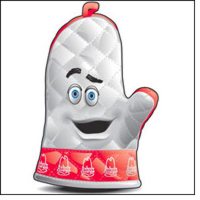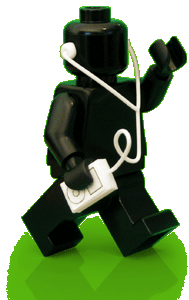Thursday, February 23, 2006
Reference tools that make your writing smarter...and easier
 Improve your work. Here are two online reference tools that every writer or copywriter should have: The Visual Thesaurus and 1-Click Answers™ from Answers.com.
Improve your work. Here are two online reference tools that every writer or copywriter should have: The Visual Thesaurus and 1-Click Answers™ from Answers.com.The Visual Thesaurus is a dictionary and thesaurus with an intuitive interface that maps out word relationships and encourages exploration and learning. Available in both a Desktop Edition and an Online Edition, the Visual Thesaurus is a great way to improve your vocabulary and your understanding of the English language. Best of all, now you can download and install the Visual Thesaurus for Microsoft Word.
1-Click Answers from Answers.com gives you instant, accurate facts. Just Alt-Click on any word in any program on your screen and a window opens filled with definitions, synonyms, translations, etc.
Actually, I’ve written about these before, but with the new MS WORD interface for Visual Thesaurus, thought it was time to mention them again.
Sunday, February 19, 2006
Brick by brick, LEGO enters the computer world.

I don’t why I keep writing about LEGO. I’m not particularly enthralled by them. But every time I turn around, it seems there’s something new in the media. This time, it’s a LEGO PC. The folks at PC Magazine commissioned famous LEGO artist
 Nathan Sawaya to build a PC using only LEGO components, which he did. But to go one better, PC Magazine turned it into a working computer and is now giving it away to some lucky person. For your chance to win, click here.
Nathan Sawaya to build a PC using only LEGO components, which he did. But to go one better, PC Magazine turned it into a working computer and is now giving it away to some lucky person. For your chance to win, click here. Monday, February 13, 2006
Branding from the outside in. What's your perspective?
 When you think about it, brands are a lot like our children. We dress them up, feed them well, fix their teeth, and when the time is right, send them out into the world, hoping they will be successful.
When you think about it, brands are a lot like our children. We dress them up, feed them well, fix their teeth, and when the time is right, send them out into the world, hoping they will be successful.
In this process, we are "positioning" them for success. But the truth is, their success depends more on how the "outside" world perceives them, than on how we want them to be perceived.
That's what "outside-in" branding is all about--recognizing and understanding that the customer experience (what lies outside of your brand) is what shapes it the most. This is true whether you're selling rail cars or fresh flowers.
In an all too typical marketing scenario, brand communications go one way--from the brand to the customer. It's the Field-of-Dreams strategy: if we say it, they will believe it.
For example, there's a new Walgreen's drug store a few blocks from my house. It's a lot more convenient than my old drugstore, so I began using it.
Walgreen's is aggressively positioning itself as a national brand retailer. They began national advertising in 2002, and are spending around $3.6M a year to convince Walgreen's that Walgreens is the perfect, convenient answer to an imperfect world. Their tagline: "That's Life. This is Walgreen's."
Unfortunately, the Walgreen's image I carry around in my head is not as favorable as Walgreen's would like it to be. From my customer experience, Walgreen's isn't convenient; it is inept. They prove that to me on practically every visit to their pharmacy. Prescriptions are partially filled because they run out of pills, which means I have to come back. Some prescriptions are overlooked altogether. And the staff of baby pharmacists they hire look at me weirdly because I don't fit into their model of how a perfect pharmacy customer should behave. Contrast that with the work Arby's is doing. They've introduced a new customer-focused branding campaign that is creating buzz in the quickserve restaurant industry.
Contrast that with the work Arby's is doing. They've introduced a new customer-focused branding campaign that is creating buzz in the quickserve restaurant industry.
Arby's is headquartered in Atlanta, so I sat down with their VP of brand communications, Debra Mager, to learn more about Arby's new branding strategy.
Arby's was at a crossroads in 2004. They needed to make the right decisions to strengthen their brand's future and generate more momentum. Up to that point, their de facto brand identity was a talking oven mitt, something to which Arby's patrons and Arby's franchisees found hard to relate.
To Arby's and their agency, Merkley + Partners, it came down to this: It wasn’t so much about selling food as it was about giving customers the choices they wanted. More importantly, Arby's recognized that the consumer and not Arby's is redefining what quality food is. Out of this thinking came a major rebranding campaign with a new cusetomer-centric theme line: "I'm thinking Arby's"
Okay, enough about Walgreen's and Arby's. Let's talk about how your clients can benefit from a little outside-in branding. First, we have to recognize that some clients won't get it. And still others may see no immediate value in it. These are the clients who are only comfortable when they are talking to themselves.
What can you do to help enlighten your client? One thing is to become a reflection of their target audience and back up your ideas with a little research. (Nothing elaborate or expensive here, just things you can do off-the-cuff.)
For instance:
▪ You can become a "mystery shopper", just by visiting a few of your client's locations.
▪ You can do a little web research on the company, industry and market.
▪ You can visit some relevant blogs.
▪ You can conduct a few brief phone interviews with your client's customers.
All of this activity often leads to a disconnect. If the client's brand promise stresses Fast Delivery, and your impromptu research shows that customers are fed up with Late Deliveries, you can do one of two things:
1. Change the brand promise to link up better with customers' experience--i.e., The slowest delivery in town
2. Change customers' experience to match the brand promise--i.e., The fastest delivery in town.
Which would you choose?
Tuesday, February 07, 2006
LEGO has seen the future -- again


The sign at the entrance to the super-secret LEGO Global Innovation and Marketing facility reads: We will do for robotics what iPod did for music. Guess what? Someone beat LEGO to the punch. An artist named Tomi creates PodBrix and sells them on his Website. According to Tomi, PodBrix are minifigs inspired by the popular ad campaign for portable music players. “I start with a standard LEGO® brand minifig and modify it by hand to create the desired appearance. Each one is slightly different.”
Okay—maybe that’s not what LEGO had in mind. They’ve been searching for a Get-Out-of-Jail-Free card ever since their profits plummeted. The last time I wrote about them, they were big into mass customization. Now, according to an article in Wired, it’s robotics. LEGO is about to unveil its newest robotic incarnation, Mindstorms NXT. This robot is fully programmable and works with USB and Bluetooth. It comes with ultrasound, sound, light and touch sensors; and three interactive servo motors. But it’s no toy—according to a LEGO survey from 1999, 70 percent of Mindstorms users were adults.
LEGO is comparing apples to iPods. If you Google “robotics kit,” you get 2.18 million pages. But Google iPod and you get 172 million pages. I’m not sure what this correlates to, but in some primitive fashion I think it shows that LEGO is no iPod. For me the question is: Is there still a broad market for LEGO? Or is LEGO trading in its mainstream appeal for a niche market? I don’t have an answer. Some somehow, I’m not convinced that LEGO has one either.
One more thing. If you have a minute, visit The Brick Testament. It’s scenes from the Bible, rendered in LEGO® brand bricks. It’s a must-see, regardless of your religious beliefs.
